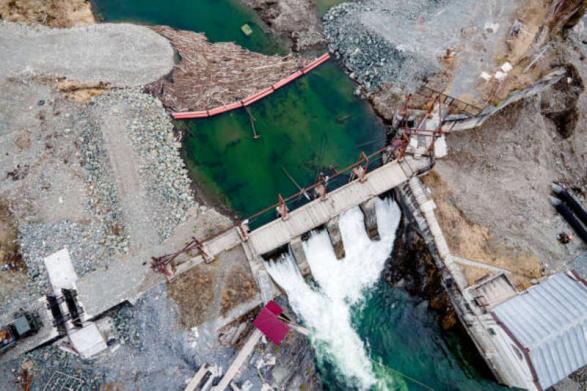While renewable energy sources like wind, solar, and hydropower offer considerable benefits in reducing greenhouse gas emissions and reliance on fossil fuels, they are not without their drawbacks. This article will delve into the less visible, underlying costs associated with these alternative energy resources. We'll explore aspects such as extraction and construction impacts, intermittency, and the economic implications of transitioning from traditional energy sources. Our aim is to provide a balanced overview, shedding light on the full spectrum of considerations when it comes to the large-scale implementation of renewable energy technologies.
Ecological Impact of Raw Material Extraction for Renewable Energy:

The extraction of raw materials for renewable energy technologies can have significant environmental impacts. For instance, the construction of wind turbines requires substantial amounts of steel, concrete, and rare earth metals. The mining process for these materials often leads to habitat destruction, soil erosion, and pollution of local water bodies. Similarly, the production of solar panels requires silicon and a variety of precious metals. Extracting these materials can cause significant land disturbance and water pollution. These ecological costs, while often overlooked in the discussion about renewables, are real and must be accounted for in a comprehensive analysis of renewable energy's environmental footprint.
Environmental Footprint of Renewable Energy Infrastructure Construction:
The construction of renewable energy infrastructure, such as wind and solar farms, also has an environmental impact. Clearing land for these projects can result in the loss of habitats and displacement of local wildlife. Additionally, the transportation and installation of large-scale equipment can contribute to air and noise pollution. In some cases, this can lead to negative impacts on nearby communities' health and quality of life. While these impacts may be considered minimal in comparison to the long-term benefits of renewable energy, they should still be taken into consideration as part of a holistic evaluation.
Intermittency and Backup Energy Sources:
One often overlooked aspect of renewable energy is intermittency - the fact that the production of electricity from sources like wind and solar can fluctuate depending on weather conditions. This poses a challenge when it comes to meeting energy demand consistently, as there are times when renewable sources may not be able to generate enough electricity to meet the needs of consumers. To address this issue, backup energy sources such as natural gas or coal-fired power plants are often needed to fill in the gaps. While these traditional energy sources can help provide stability and reliability to the grid, they come with their own set of environmental and economic costs.
Economic Implications of Transitioning to Renewable Energy:
Transitioning from traditional energy sources to renewable energy is a significant undertaking that requires substantial financial investments. The costs associated with building and maintaining renewable energy infrastructure, as well as integrating it into existing electricity grids, can be quite high. This may result in increased electricity prices for consumers and companies that rely on energy-intensive industries.
Furthermore, the shift away from traditional sources of energy can also have economic impacts in areas that heavily rely on these sectors, such as job loss and a decrease in tax revenue. It is essential to consider these economic implications when evaluating the feasibility of large-scale renewable energy implementation.
Hidden Costs in the Lifecycle of Renewable Energy Systems:
Renewable energy systems also have hidden costs in their lifecycle. After their operational life, wind turbines, solar panels, and batteries need to be decommissioned and disposed of. Currently, many components of these systems are not recyclable and end up in landfills, leading to potential soil and groundwater contamination. The process of dismantling and recycling these materials also consumes energy and can generate emissions. As the use of renewable technologies grows, it's crucial to develop sustainable strategies for end-of-life management of these systems. This includes exploring opportunities for circular economies, where materials are reused or recycled, reducing waste and environmental impact.
Renewable Energy Versus Traditional Energy Sources:

The debate between renewable energy and traditional energy sources is a complex one that requires a nuanced understanding of the associated costs and benefits. While renewable energy offers the promise of reducing greenhouse gas emissions and diversifying our energy mix, it also brings certain challenges and hidden costs. Conversely, traditional energy sources, while often more reliable and economically viable, contribute heavily to climate change. The path forward may lie not in choosing one over the other, but in finding a balance that leverages the strengths of both while mitigating their weaknesses. This requires continued research, technological advances, policy support, and public engagement to drive a sustainable, equitable, and secure energy future.
Factoring in the Hidden Costs of Renewable Energy:
As renewable energy continues to grow in popularity and affordability, it is imperative that we consider the hidden costs associated with its production and utilization. This includes not only the environmental impacts but also social and economic considerations. By factoring in these hidden costs, we can make more informed decisions about the feasibility and sustainability of transitioning to renewable energy sources. It is crucial that all stakeholders - governments, industry, and consumers - work together to create a balanced approach that considers all aspects of renewable energy's environmental footprint. Only then can we move towards a truly sustainable energy future.
Conclusion:
Renewable energy offers many benefits in mitigating climate change and diversifying our energy mix. However, it is vital to take a holistic approach when evaluating its viability and impact. This includes considering the environmental, economic, and social costs associated with its production and utilization. By acknowledging and addressing these hidden costs, we can ensure that the transition to renewable energy is truly sustainable and beneficial for all. Only through a balanced and comprehensive approach can we create a better, cleaner, and more resilient energy future for generations to come.




